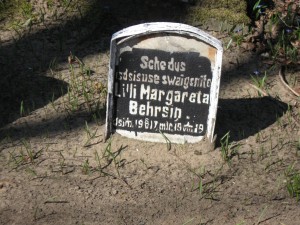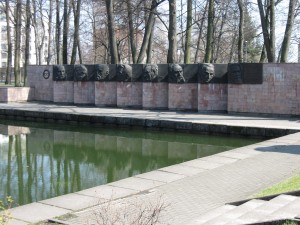This is a key letter for the Family History Through the Alphabet challenge. Not for the letter itself, but for the subject matter. The International Tracing Service can be the key to unlocking one’s family history – if your family emigrated from Latvia in the post-Second World War period.
I’ve already talked about the ITS on this blog, but their importance cannot be stated enough. What are they? In short, they are an organization that preserves documents relating to individuals in the the Second World War and post-Second World War era, and what happened to these individuals. Their webpage states that they serve “victims of Nazi persecutions and their families by documenting their fate”, but they do more than that as well – many documents relate to victims of Soviet oppression and those fleeing the Soviet occupation – the category in which many post-war Latvian migrants fall. While they are a German institution, they also have documents on people who were in Displaced Persons Camps outside of Germany – for example, I have successfully obtained information about my grandmother’s time in Denmark from them.
Why are these documents key for those tracing their ancestors who emigrated at this time? Well, if you were an emigrant from Latvia at this time period, you were one of millions of Displaced Persons from all across Eastern Europe. Almost all of these individuals will have transited through a Displaced Persons camp at some point during this time period (I’d say “all”, but I’m sure there may be exceptions – I have yet to see any though), which means a record would have been created for that person. The ITS will have copies of these documents.
These documents could provide a variety of information, but at their most basic level, they would provide the name and birthdate, ethnicity, citizenship, place of birth and last place of residence in the home country. Many documents will also state occupations, family members they are traveling with, names of parents (sometimes including maiden names), previous Displaced Persons camps they lived in, what the Displaced Person’s goal is – resettlement elsewhere, repatriation, etc. and the end result of that – usually the name of the ship and date that they traveled from Europe to their new home. If you’re really lucky, you could also end up with family letters, essays describing why they left and what they want to do now, essays describing where they were during the war and what they were doing (usually to prove that they hadn’t been complicit in Nazi war crimes), and a variety of other documents.
The only downside to the ITS is that it can take a long time for them to fill your request. So don’t delay – go here, read it, and then fill in the online application right away. The key to unlocking your family history might be there waiting for you!


